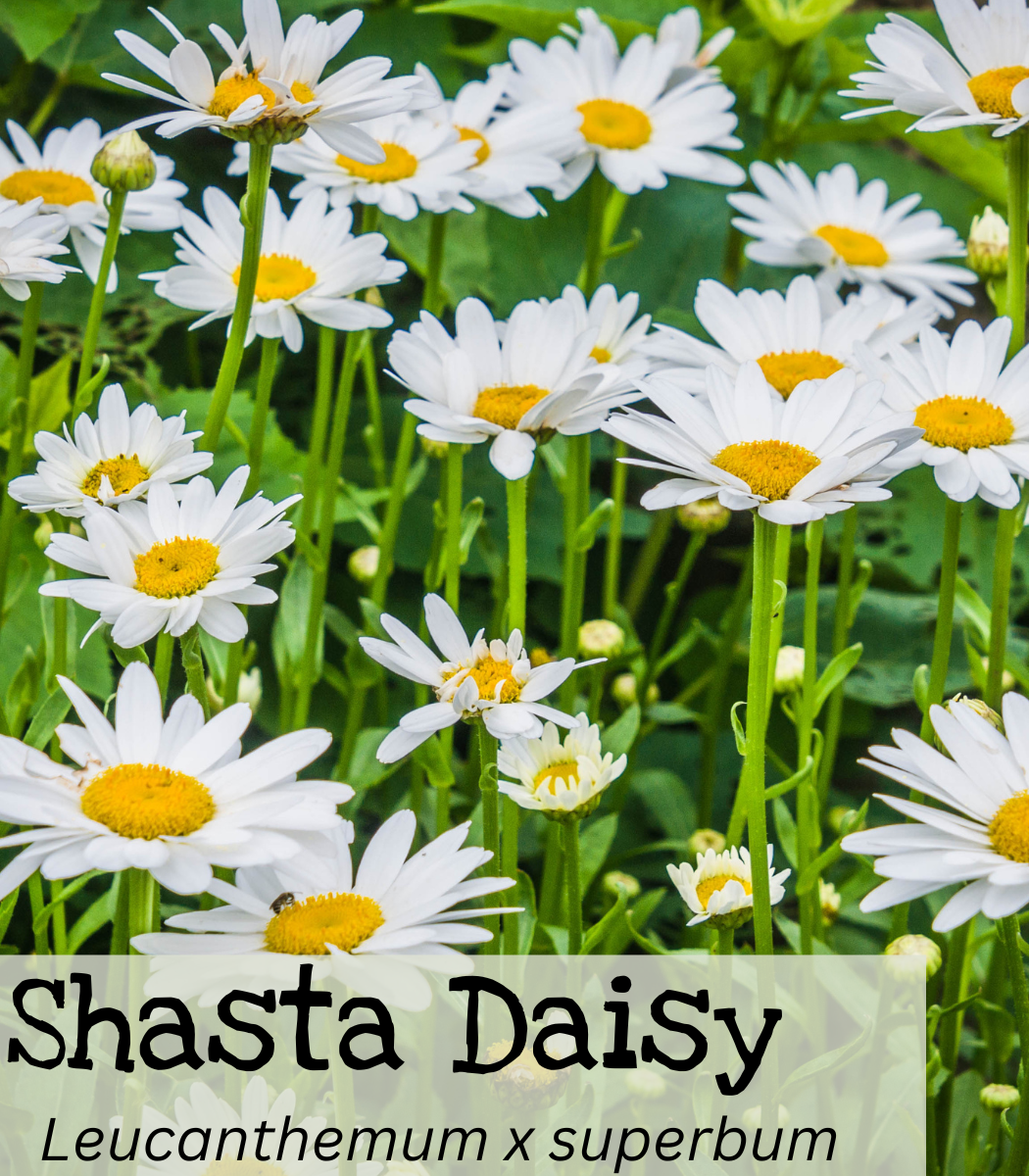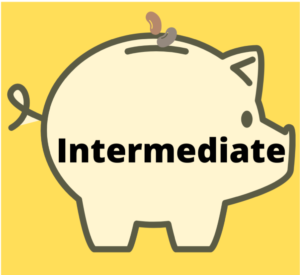
Shasta Daisy
Shasta daisies are short-lived perennials. They are excellent for containers, cut flowers and attracting numerous pollinators!
|
N/A |
|
Leucanthemum x superbum |
|
Easy |
|
Intermediate |
|
3 years if properly stored |
|
Perennial |
|
10-12 days |
|
2-4′ tall with 1.5-2′ spread |
|
Need light to germinate Full sun |
|
Summer-Fall |

Growing Tips


When to Start
Start indoors: 6-8 weeks before the last frost date. (End of February/March for GA.)
Transplant: After hardening off and all danger of frost has passed. (May 1 for Jefferson, GA)
Direct Sow: After the danger of frost has passed. (May 1 for Jefferson, GA)
How to Grow
To start indoors, start 6-8 weeks before the last frost. (End of February/March for GA.) Sow in cells and gently press into the seed starting mix as the seeds need light to germinate. Keep the soil moist but not soggy throughout the germination process. Transplant or direct sow into full sun beds after the danger of frost has passed. (May 1 for GA.) Space or thin the plants to 8-12 inches.
Care
Plant in well-draining, rich soil. The seeds need light to germinate. Press into the soil or very lightly cover with soil to keep the wind from blowing the seeds away. While Shasta daisies will take light shade, as opposed to a full sun location, the plants won’t tolerate soggy roots or standing water. Provide appropriate drainage several inches down in the soil. Shasta daisy plants are short-lived perennials, meaning they return for just a few years.
Deadhead the plant to encourage more blossoms. Cut back the plant after blooming to encourage re-blooming. Flowers bloom in the summer and are good cut flowers. When blooms of Shasta daisy flowers finish, usually in September, cut the foliage back severely. Flowers bloom in the summer and are good cut flowers. Divide the plants every 2-4 years to prevent overcrowding. Add a layer of mulch to protect the daisies during the winter months.
Seed Saving

Isolation Distance
Shasta daisies are a hybrid, so their seeds will not produce true-to-type. There is no need to isolate varieties as propagation is done through cuttings or division.
Instructions
Dividing
Select healthy, robust plants free of any signs of disease or insect infestation for propagation.
Divide the plants at least once every 2 years. When the plants are dormant, either early spring or late fall, loosen the soil around the plant until the root ball can be easily removed. Using a shovel or pruners, divide the plants so that they have both leaves and roots. Then replant them into the ground.
From Cuttings
In early spring, choose healthy shoots that don’t have a flower bud on them. Remove the lower leaves and dip the stem into root hormone. It may not be necessary to use root hormone, but it is very helpful. Place the stem into the prepared nursery pots. Keep the soil moist but not soggy.
Shasta Daisies root best in high humidity. Cover with a humidity dome or plastic wrap to create more humidity and place under grow lights. They should root in 2-3 weeks. Once the roots have grown and you see new growth, you can harden off and transplant into the garden.
Features
- Attracts pollinators
- Good-cut flowers
- Deer resistant
- Container friendly
- Drought tolerant
- Easy to grow
- Poor soil tolerant
